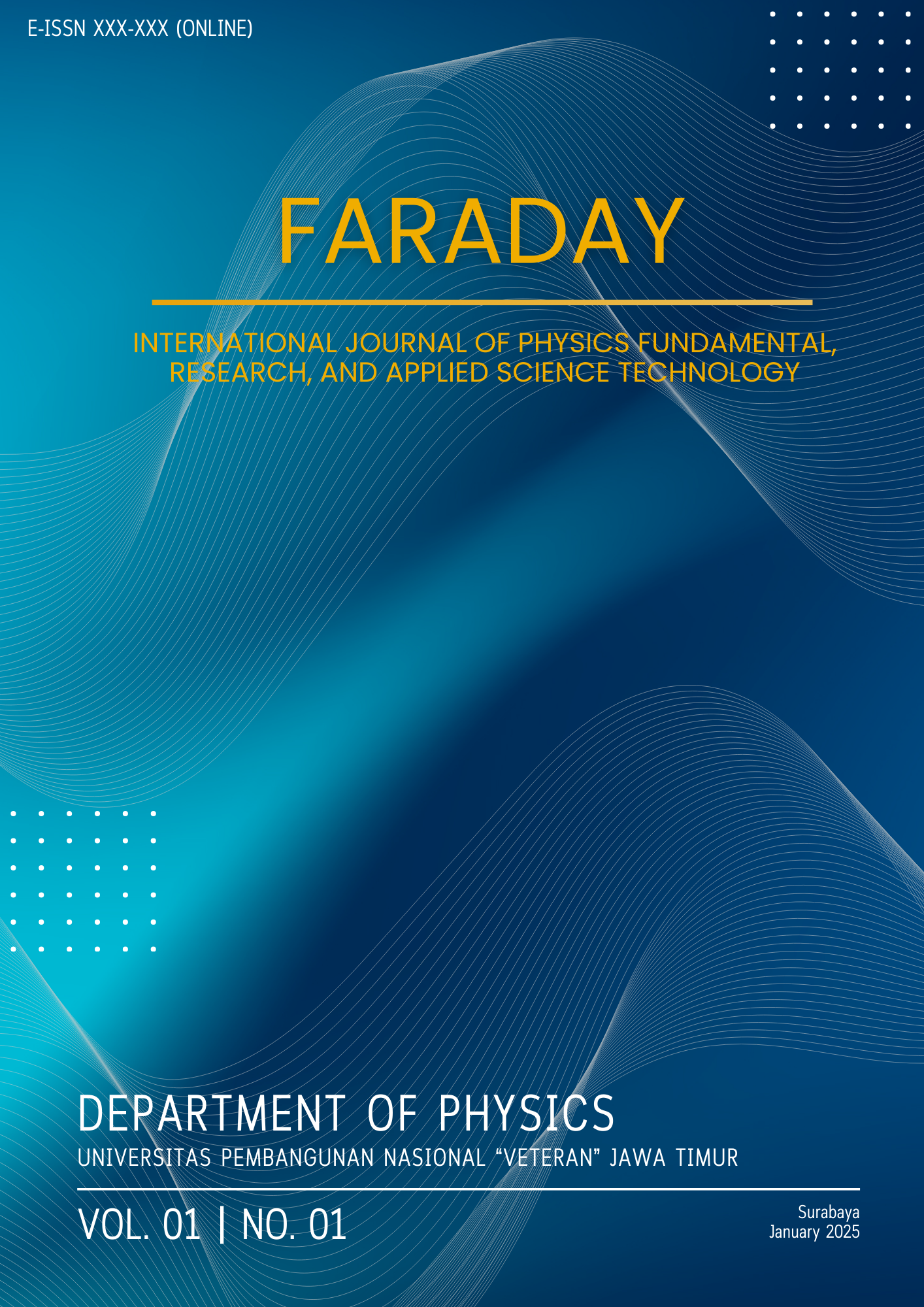Implant Design Femur Bone using CAD Computation with Variation in Implant Plate Length
DOI:
https://doi.org/10.33005/faraday.v1i1.9Keywords:
biomechanics, finite element method, femur bone implant, stress distribution, deformationAbstract
Femoral fractures are among the most common and severe musculoskeletal injuries, necessitating effective and reliable treatment strategies. This study explores the biomechanical performance of femur implants by evaluating the effects of material selection and implant design using the finite element method (FEM). Three biocompatible materials—titanium alloy Ti-6Al-4V, stainless steel, and PEEK—were analyzed under linear elastic isotropic conditions. Implant designs varied in length (10.02 mm, 13.37 mm, and 15.60 mm) with a fixed head thickness of 3 mm. Simulations assessed stress distribution, deformation, and overall structural performance under physiological loading conditions. Results demonstrated that implant length significantly affects mechanical behavior. The 15.60 mm implants exhibited the most uniform stress distribution and minimal deformation, indicating superior mechanical stability. In contrast, shorter implants (e.g., 10.02 mm) showed increased stress concentrations and deformation, suggesting a higher risk of mechanical failure. Among the materials tested, Ti-6Al-4V outperformed others due to its favorable combination of strength and biocompatibility. The study concludes that longer implants made from titanium alloy provide improved structural integrity, offering safer and more durable options for femoral fracture repair. These findings contribute to the optimization of implant design for enhanced clinical outcomes in orthopedic applications
Downloads
References
Kezia, G.W., (2023). Analisis Pengaruh Larutan Infus Saline Water dan Ringer Lactate Terhadap Laju Korosi Paduan Titanium Ti-6al-4v yang digunakan untuk Implan Tulang. Jurnal Teknik Mesin S-1, 11, 4, 179-185.
Mahruri, A.W., (2023). Study Analisis Elemen Tetrahedron dan Hexahedron Plat Tulang Material Magnesium AZ31B dengan Finite Element Method (FEM). Jurnal Infotekmesin, 13, 1, 131-137.
Rizki, M.N., (2023). Analisis Von-Mises Stress, Strain, dan Total Deformasi pada pelat Implan Metatarsophalangeal (MTP) dengan Material Ti-6al-4v menggunakan Finite Element Meth. Jurnal Teknologi Kimia Unimal, 12, 2, 178-180.
Rokhana, R., (2019). Convolutional Neural Network untuk Pendeteksian Patah Tulang Femur pada Citra Ultrasonik B–Mode. Jurnal JNTETI, 8, 1, 59-60.
Siahaan, M. Y. R. , (2022). Analisis Numerik Terhadap Sambungan Prototipe Pengganti Tulang Panggul Patah Pada Manusia menggunakan Perangkat Lunak Solidworks. Jurnal Dinamis, 10, 1, 15-20.
Downloads
Published
Issue
Section
License
Copyright (c) 2025 Oka Akbar Sudrajat, Ladya Cheril Az Zahra, Arum Sinda Santika, Dira Ernawati, Akbar Sujiwa

This work is licensed under a Creative Commons Attribution 4.0 International License.














